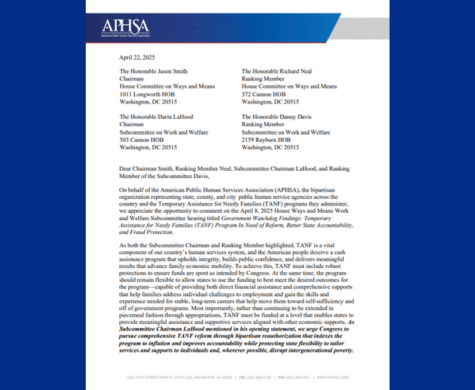Who We Are
Bipartisan and membership driven, the National Association of State TANF Administrators (NASTA) provides national leadership for the development of sound policy, successful and innovative practices, and critical capacity building to improve agency performance and consumer outcomes. NASTA promotes informed decision making through the distribution of best practices and research to enhance the professional development of both its members and the federal policy making process. To facilitate its work, NASTA maintains an active listserv, hosts webinars and all member calls, and conducts an annual education conference and business meeting.
Our Purpose
NASTA members are public administrators and other officials who are committed to developing, implementing, and evaluating Temporary Assistance to Needy Families (TANF) and related economic support programs that are responsive and accountable to the needs of the communities and the people they serve.
Contact
Kapria Lee
Senior Policy Associate of Social and Economic Mobility
Leadership
NASTA ADVISORY COUNCIL MEMBERS
CHAIR
Patara Horn, Director
Bureau of Working Families
WI Department of Children and Families
SECRETARY
Angie Sam, TANF Program Director
SD Department of Social Services
VICE-CHAIR
Megan Nicholls, Associate Commissioner
Family and Economic Assistance
MA Department of Health and Human Services
IMMEDIATE PAST CHAIR
Babs Roberts, Director
Senior Advisor for the Economic Justice Alliance
WA Department of Social and Health Services
REGIONAL REPRESENTATIVES
REGION I: CT, ME, MA, NH, RI, VT
Erin Oalican, Reach Up/TANF Director Economic Services Division
VT Department of Children and Families
REGION VI: AR, LA, NM, OK, TX
Rhonda Archer, Programs Administrator, TANF Programs
OK Department of Human Services
REGION II: NJ, NY, PR, VI
Alecia Eubanks, Assistant Division Director, Office of Program Operations
NJ Department of Human Services
REGION VII: IA, KS, MO, NE
Carla Whiteside-Hicks, TANF Administrator
KS Department of Children and Families
REGION III: DE,DC, MD, PA, VA, WV
Stefanie Cyrus, Senior Policy Specialist
WV Department of Health and Human Resources – MR
REGION VIII: CO, MT, ND, SD, UT, WY
Ian McMahon, TANF, Division Director
CO Department of Human Services
REGION IV: AL, FL, GA, KY, MS, NC, SC, TN
Allison W. Smith, Deputy Director, Division of Social, Economic and Family Services
NC Department of Health and Human Services
REGION IX: AZ, CA, GU, HI, NV
Lisa Witchey, Branch Chief, CalWORKs and Family Resilience Branch
CA Department of Health and Human Services
REGION V: IL, IN, MI, MN, OH, WI
Betsy Surver, Bureau Chief, SNAP and Cash Policy and Technical Assistance
OH Department of Job and Family Services
REGION X: AK, ID, OR, WA
Claire Carpenter-Seguin, Deputy Director, Self-Sufficiency Programs
OR Department of Human Service
AT-LARGE REPRESENTATIVES
AT-LARGE REPRESENTATIVE 1
Kimberly Rauch, RI Works/TANF Administrator
RI Department of Human Services
AT-LARGE REPRESENTATIVE 2
Matt Uthoff, TANF Administrator
IA Department of Human Services
COUNTY REPRESENTATIVES
LOCAL REPRESENTATIVE 1
Kiva Rogers, Director
Chesterfield-Colonial Heights, VA Department of Social Services
LOCAL REPRESENTATIVE 2
Gidget Stevens, Director of Integrated Services
Oswego County, NY Department of Social Services
Latest Work
COMMENTS IN RESPONSE TO REGULATORY ACTION
- Comments in Response to OFA’s Request For Information related to Sections 302 and 304 of the Fiscal Responsibility Act of 2023 (January 2024)
- Comment Letter on 2023 TANF NPRM (December 2023)
COMMENTS IN RESPONSE TO CONGRESSIONAL HEARING



